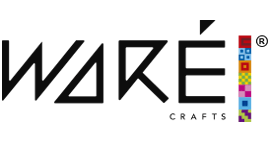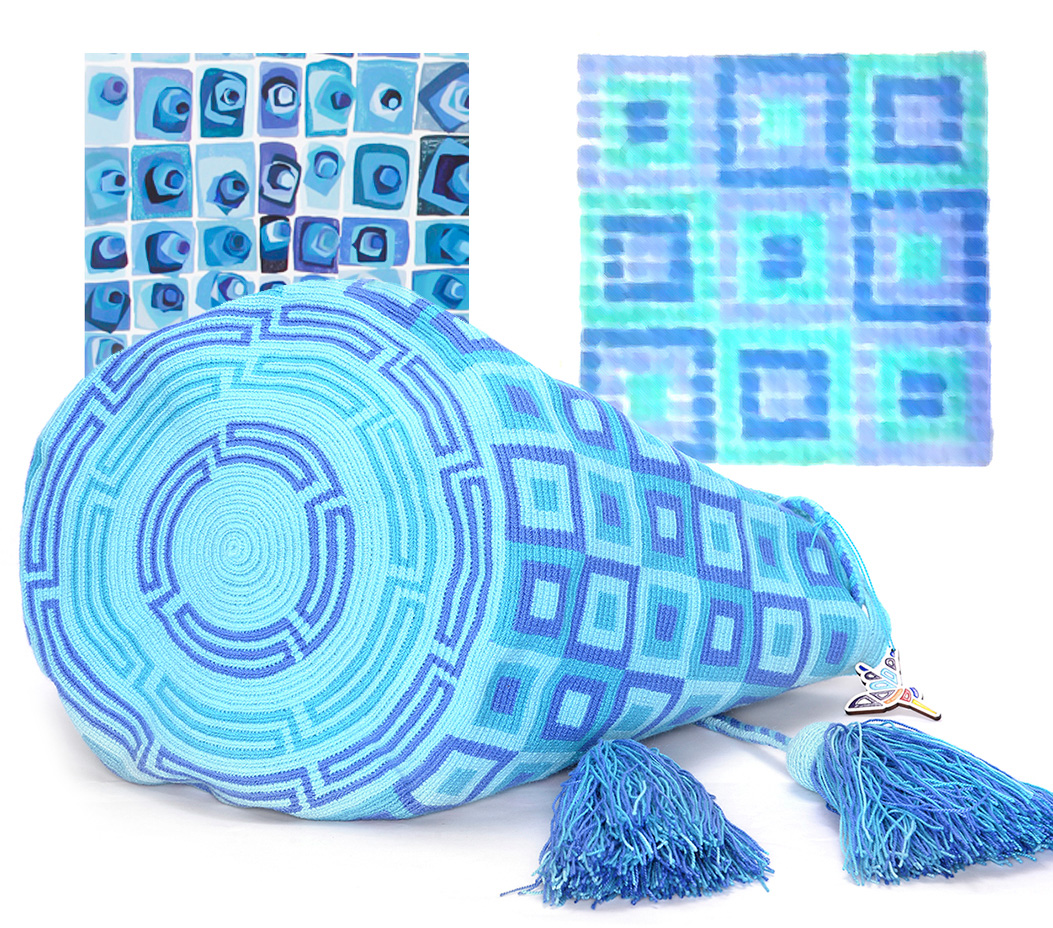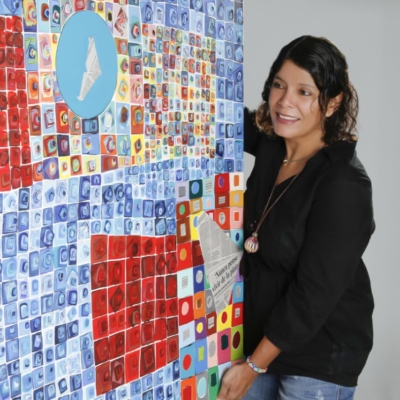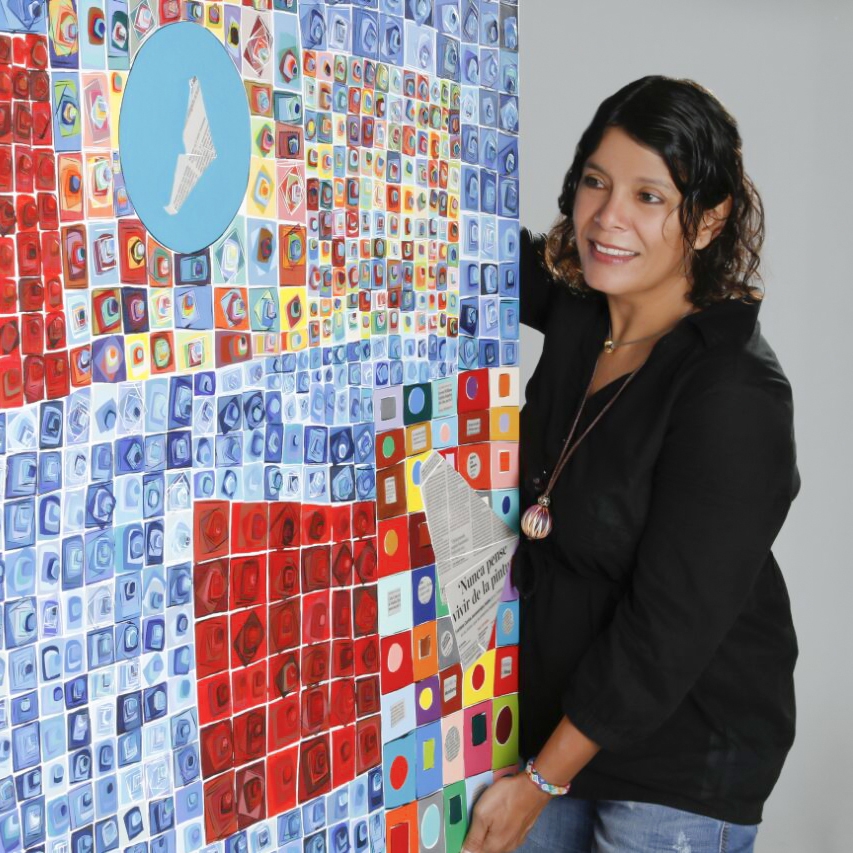Ten years ago, while Paula Peña Amaya, co-founder of Waré Crafts, was walking through Alta Guajira, she found a group of artisans who had woven a “Mochila” with a pattern that included squares within squares; An innovative fabric very different from traditional designs. Also it resembled a painting made by the artist Patricia Quevedo, that Paula had bought in previous years.
Knowing that Patricia would love it, she brought the ‘Mochila’ to her and together they started discussing ideas surrounding blending both Patricia’s artist work and the Wayuú handcraft tradition.
Years later Paula had returned from Switzerland with an MBA where she enriched her knowledge in sustainable business. She met once again with Patricia Quevendo; reawakening their idea. What was once a beautiful concept became the first collection of Waré Crafts.







